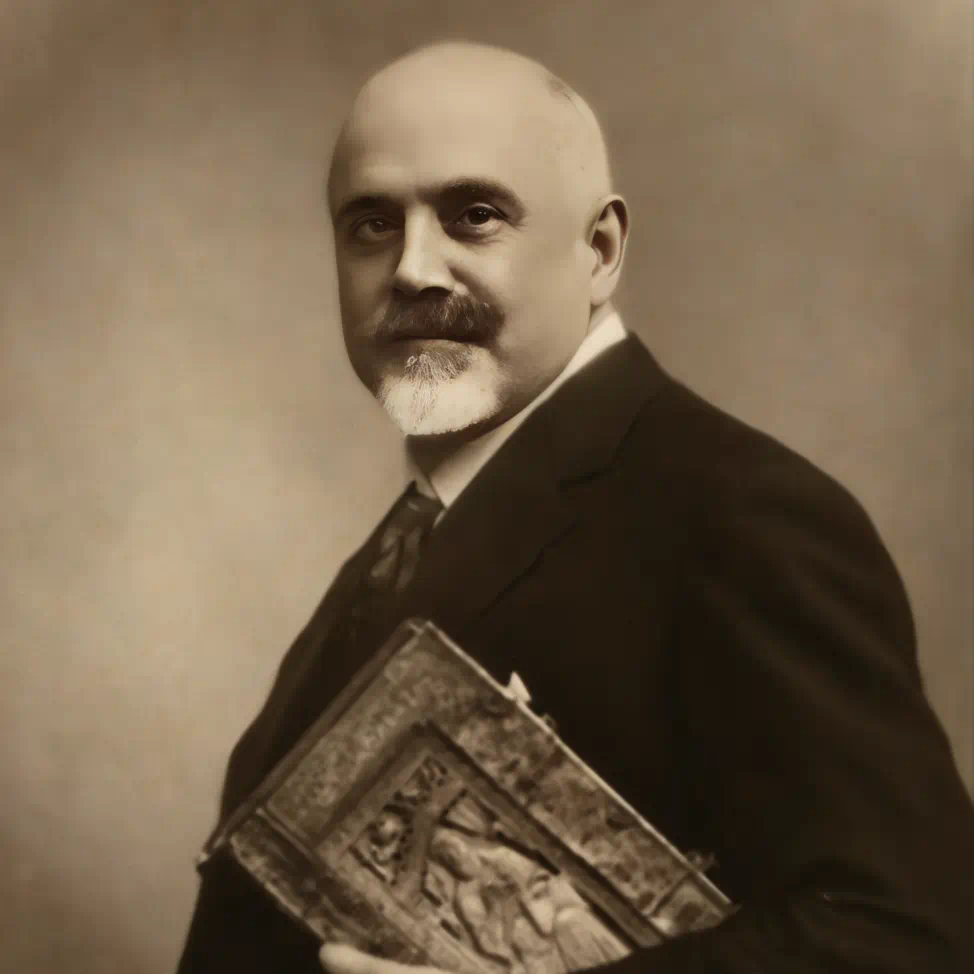
A Life Dedicated to History and Preservation
Giuseppe Gerola, born on April 2, 1877, in Arsiero, Italy, was a distinguished historian, archaeologist, and art connoisseur whose work left an indelible mark on the preservation and understanding of Venetian monuments, particularly those in Crete. His dedication to meticulous research, combined with his passion for cultural heritage, led to the creation of a monumental work that continues to serve as a cornerstone for historical research.
Early Life and Education
Gerola’s family hailed from Rovereto, a region with a strong irredentist sentiment during the Italian unification period. His father, Domenico Gerola, was an ardent supporter of Garibaldi and actively campaigned for the region’s integration into the Italian nation. Gerola’s mother, Augusta Cofler, also came from a family with a history of political activism, despite their Germanic origins.
From a young age, Gerola displayed exceptional intellectual capabilities. He pursued classical studies, first at the University of Padua and later in Florence. Under the tutelage of Cesare Pauli, he specialized in paleography and diplomatics, skills that would prove invaluable in his later research. Even before completing his degree in 1898, Gerola embarked on his writing career, contributing articles on historical and literary topics to various Italian publications.
The Cretan Mission
In 1899, at the age of 22, Gerola was presented with a unique opportunity that would shape his career and establish his legacy. The Venetian Institute of Science, Literature, and the Arts, recognizing his potential and expertise, commissioned him to undertake a field study in Crete. The mission: to document the Venetian monuments scattered across the island, remnants of a bygone era that were gradually succumbing to neglect and decay.
Gerola’s meticulous preparation for this endeavor underscored his dedication and scholarly approach. He spent months immersing himself in the archives and libraries of Venice, meticulously studying manuscripts, maps, and historical records related to Crete. He even took the initiative to learn Greek, recognizing the importance of direct communication with the local people and authorities.
Documenting Venetian Crete
Arriving in Crete in 1900, Gerola embarked on an extensive exploration of the island, meticulously documenting its Venetian heritage. His work was not confined to the major cities of Heraklion, Chania, Rethymno, and Sitia; he ventured into the remote corners of the island, capturing the essence of castles, churches, fortifications, and other architectural gems that bore witness to the Venetian presence.
Gerola’s approach was comprehensive and systematic. He employed various techniques, including photography, sketching, and plaster casting, to create a detailed record of the monuments. He also collected inscriptions, graffiti, and other artifacts that provided valuable insights into the social, cultural, and economic life of Venetian Crete.
“Monumenti Veneti nell’ isola di Creta”
Gerola’s tireless efforts culminated in the publication of his monumental work, “Monumenti Veneti nell’ isola di Creta.” This five-volume masterpiece, published between 1905 and 1932, stands as a testament to his dedication and passion for preserving Crete’s Venetian heritage. The work is a treasure trove of information, containing detailed descriptions, architectural plans, historical context, and a wealth of photographs that capture the grandeur and intricate details of the monuments.
The first volume, divided into two parts, focuses on the fortifications of Crete, meticulously documenting both the older Byzantine and Genoese structures and the newer Venetian fortifications. Gerola’s analysis goes beyond mere description; he delves into the historical context, the construction techniques, and the strategic importance of these fortifications.
The subsequent volumes explore other aspects of Venetian Crete’s architectural legacy, including churches, public buildings, hydraulic works, and private residences. Gerola’s meticulous research and insightful commentary provide a comprehensive picture of the island’s rich cultural heritage during the Venetian period.
Legacy and Recognition
Gerola’s work was met with widespread acclaim and recognition. His meticulous documentation of Crete’s Venetian monuments not only preserved their memory but also provided a valuable resource for future generations of historians, archaeologists, and art enthusiasts. His dedication to his craft and his passion for cultural heritage earned him the respect and admiration of his peers.
In 1933, Gerola was awarded the prestigious Mussolini Prize by the Royal Academy of Italy, a testament to the significance of his contributions to the field of history and preservation. In 1934, the Municipal Council of Heraklion further honored him by declaring him an honorary citizen of the city.
Beyond Crete
Gerola’s expertise extended beyond Crete. In 1912, he was sent to the Dodecanese islands, then under Italian control, to document the monuments there. He also served as the director of the Museum of Bassano del Grappa and the Museum of Verona, where he oversaw restoration projects and contributed to the preservation of Italy’s rich cultural heritage.
Key points
- Born: 2 April 1877, Arsiero, Italy
- Died: 21 September 1938, Trento, Italy
- Nationality: Italian
- Legacy: Extensive documentation of Venetian monuments in Crete, contributing significantly to the understanding of the island’s history and cultural heritage

